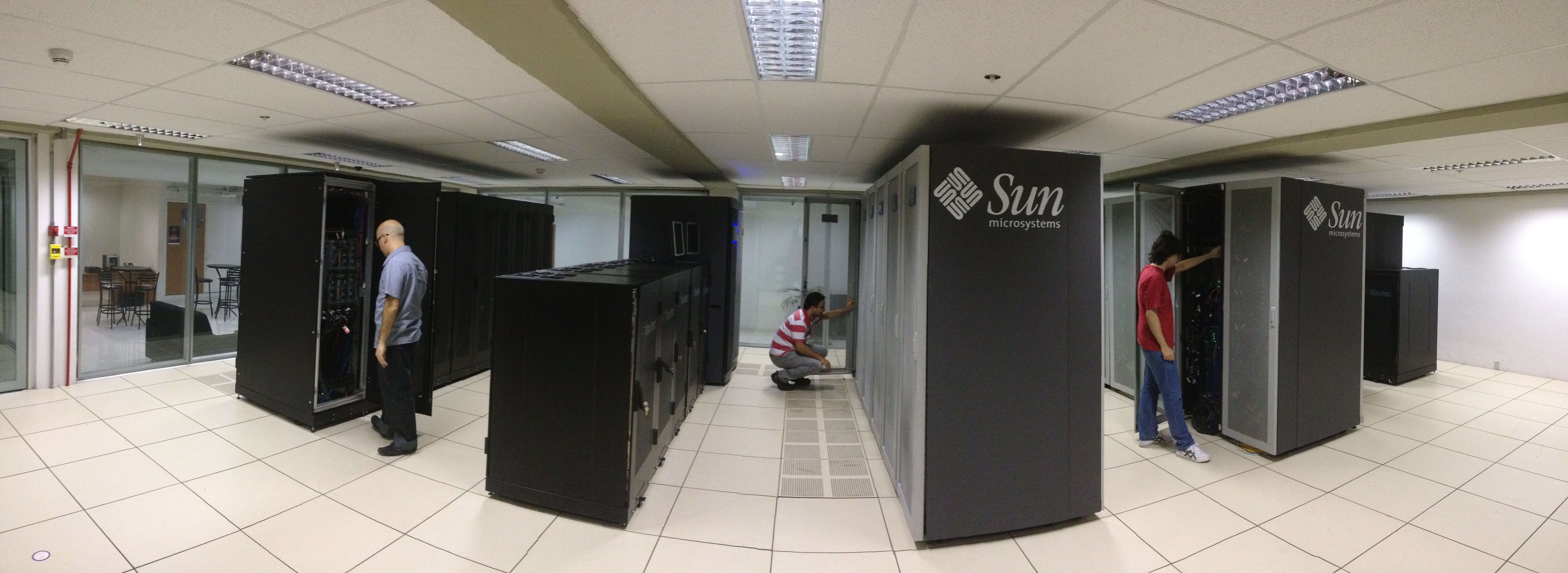BR-SP-SPRACE cluster: A Tier 2 of the WLCG

The SPRACE cluster is a Tier 2 computing center of the Compact Muon Solenoid (CMS) experiment, one of the two large general-purpose particle physics detectors of the Large Hadron Collider (LHC) at CERN. It was funded by Fundação de Amparo à Pesquisa do Estado de São Paulo (FAPESP) through Thematic Projects.
The SPRACE cluster began its operations in 2004, processing DZero/Fermilab data. In 2005 SPRACE became an Open Science Grid (OSG) official site and in 2006 joined the CMS experiment. In 2009 SPRACE signed the WLCG Memorandum of Understanding (MoU), becoming an official WLCG Tier 2 facility (BR-SP-SPRACE), the only official Latin America WLCG Tier 2 site.
Currently it has 25.20K HEPSPEC06 (3553 SPEC CPU2017) of processing power in 128 servers with 1.792 CPU cores, and 2.000 TB of storage (2.8 PB raw) in 17 storage servers, all with 10GbE or 40GbE connection. A more detailed description of the computing and storage resources of the SPRACE cluster can be found here.

Data transmission records
In 2016, at the SuperComputing Conference (SC16), SPRACE, in collaboration with the Academic Network of São Paulo (ANSP), Americas Pathways (AmPATH) and the California Institute of Technology (Caltech), set a new data transmission record between the Northern-Southern hemispheres by using new international 100 Gbps links. Data transfer reached 97,56 Gbps and averaged 96,56 Gbps during an hour of transmission. Thanks to SPRACE the São Paulo State University (Unesp) is currently the only academic institution in Latin America capable of transferring data at 100 Gbps to the United States.
This was the third time the SPRACE team set the data transfer record between hemispheres. In 2004 transmissions reached 1 Gbps and, in 2009, 16,5 Gbps. SPRACE has been participating in these SuperComputing demonstrations and bandwidth challenges, in collaboration with Caltech, for over 12 years.






